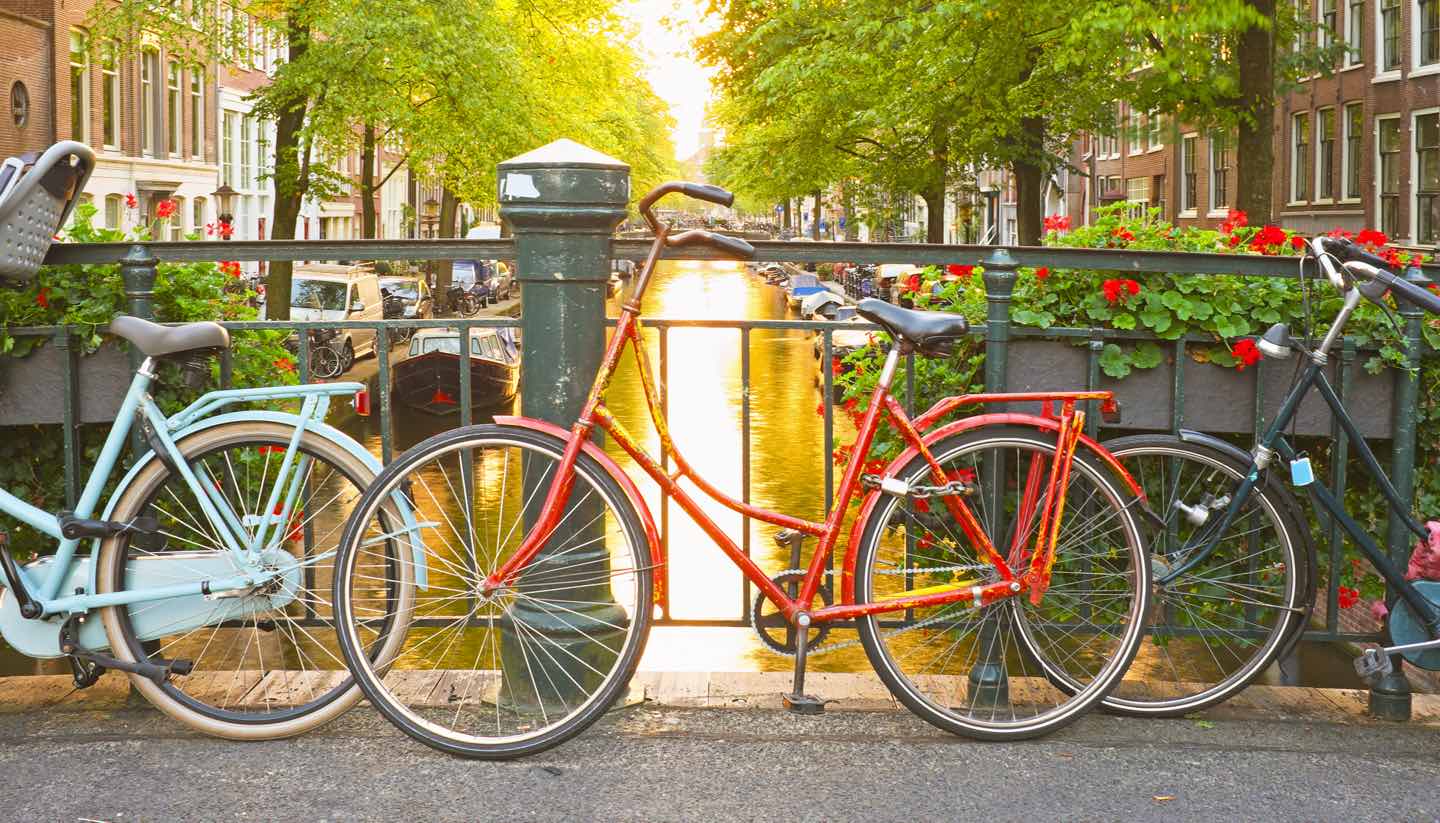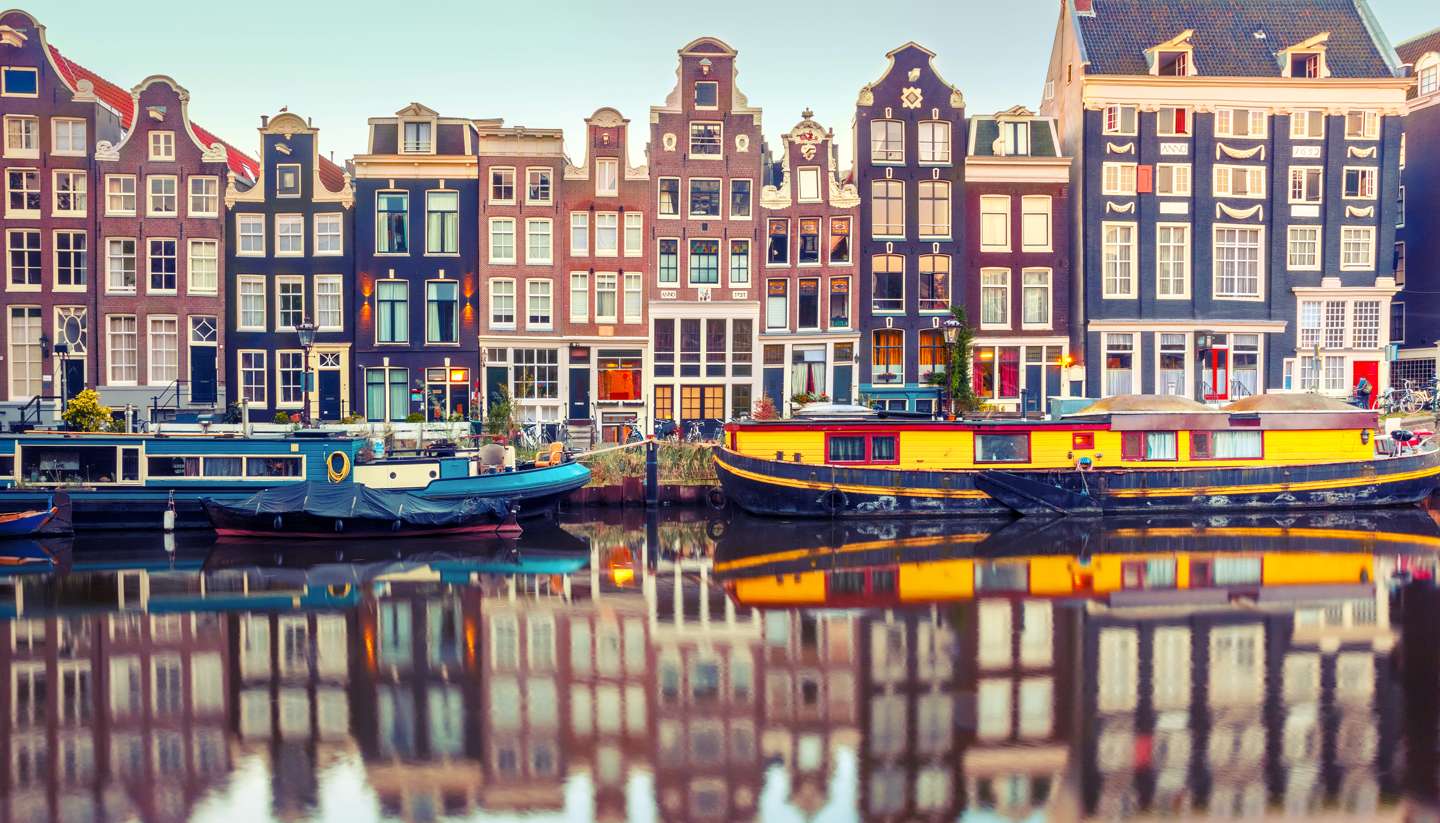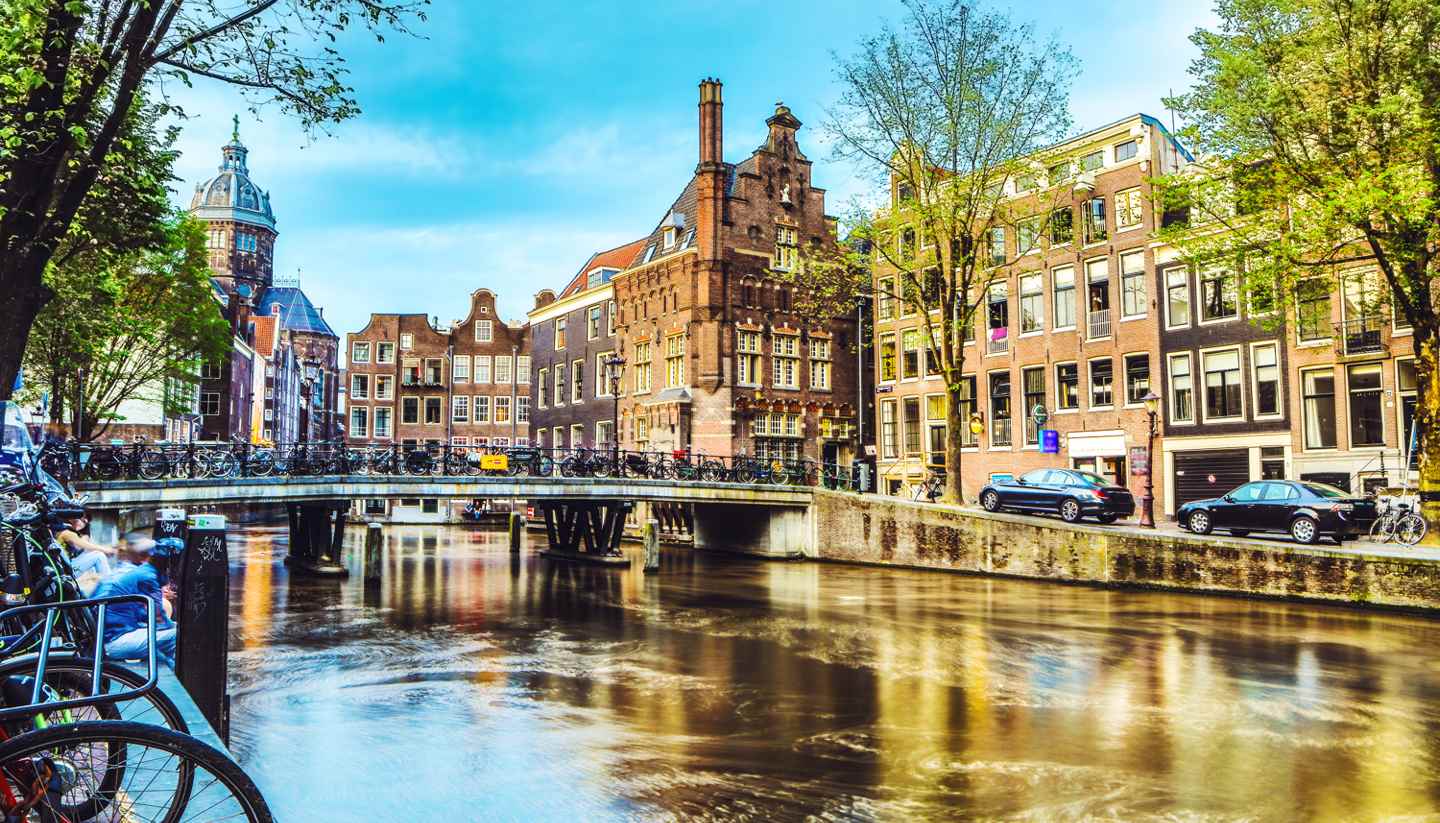Amsterdam History
The Dutch capital has its roots in the damming of the River Amstel in the 13th century, spawning the settlement of Aemstelledamme. The town became a trading centre, with ships delivering grain and timber from the Baltic region, then picking up cloth manufactured in Leiden. As the sea trade grew, more ships were built and in the mid-16th century the harbour was expanded.
After the Kingdom of Spain acquired Holland in 1519, King Philip II's attempts to restore Catholicism were fiercely opposed. In 1579, seven northern provinces formed an alliance against Spain, marking the inception of the Netherlands as a country. In the 17th century, as Dutch ships plied the seas seeking foreign sources of goods, Amsterdam became the centre of a thriving shipbuilding industry.
During this period, the city’s network of canals was completed and stately homes were built along their banks for the wealthy merchant class. It was also a golden age for the arts, when The Night Watch and other masterpieces that now hang in Amsterdam's Rijksmuseum were painted.
The Anglo-Dutch Wars began in 1652, as England challenged Holland for hegemony of its trade routes, which weakened the country. At the end of the 18th century, Revolutionary France invaded and Napoleon installed his brother Louis in Amsterdam's Royal Palace.
After Napoleon's defeat, the Kingdom of the Netherlands was restored in 1815 and the country slowly began to regain its prosperity. The construction of the grand Centraal Station secured Amsterdam's position as a rail transport hub.
Massive industrialisation and then the Great Depression in the early 20th century were followed by the Nazi invasion in WWII. Unlike Rotterdam and Arnhem, Amsterdam emerged physically unscathed, though it suffered the mass deportation of its substantial Jewish population.
In the 1960s the city became a countercultural mecca, with escalating rents in the following decade provoking a squatters’ movement. By the turn of the millennium, Amsterdam had transformed itself into a global business centre with many foreign firms setting up operations in the capital.
Did you know?
• There are an estimated 847,000 bicycles in Amsterdam - and around 12,000 are pulled from its canals each year.
• Amsterdam has more museums per square metre than any other city in the world.
• Schiphol Airport is actually 4m (13 ft) below sea level.





